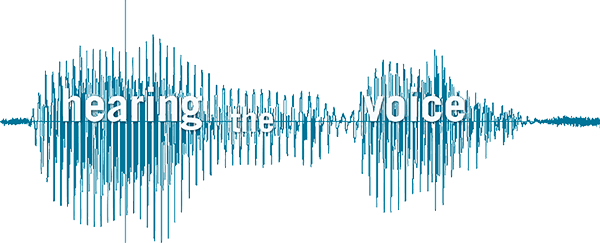As part of my PhD thesis, I have recently written a review paper (co-authored with Charles Fernyhough and Amanda Ellison) on the cognitive neuroscience of inner speech and voice-hearing. The paper also looks at how this relates to findings that suggest that neurostimulation may be an effective treatment option for those who are distressed by the voices they hear. The paper is now published in Neuroscience and Biobehavioral Reviews (here), and its open access, so anyone can download the paper for free.
In the paper, we first provide an overview of ‘inner speech theories’ of auditory verbal hallucinations (AVHs), which argue that the ‘raw material’ of some AVHs may be a form of inner speech. We then argue that a bias in ‘reality monitoring’ or ‘self-monitoring’ may lead to a misattribution of inner speech to an external source, which may underlie hallucinatory experiences.
Neuroimaging, a technique which allows us to see which parts of the brain are more active at certain points in time, has shown that there is a large amount of overlap between which areas of the brain are active whilst participants are engaged in inner speech, and which areas are active during the experience of hearing a voice in the absence of any external stimulus. For example, studies typically show brain activity in areas that are classically associated with language production (inferior frontal gyrus) and language comprehension (superior temporal gyrus), as well as other areas in the frontal lobe that may be important in exerting control over these language areas (e.g., anterior cingulate cortex). Furthermore, a lot of research now looks at how these areas of the brain work together – for example, whether they tend to be active at the same time, or at different times.
We can also study the functions of different areas of the brain using noninvasive neurostimulation techniques, which allow us to (ever so slightly) modulate activity in different areas of the brain, and observe the effect on behaviour. The technique is applied transcranially (through the scalp), and is completely safe and painless. (For more information on this technique, see my previous blog post on the matter.) Interestingly, some have argued that neurostimulation has the potential to be used as a treatment option for people who are distressed by, and seek help with, their voices. This has been tested experimentally by applying neurostimulation to reduce activity in areas of the temporal lobe, and results suggest that this may be an effective method of reducing the frequency of AVHs. In the paper, we argue that the observed therapeutic effect may be linked to the effect of the stimulation on self-monitoring or reality monitoring mechanisms, which also seem to recruit this brain area. The evidence for this claim comes from studies that have looked at brain activity following neurostimulation, and studies that have looked at brain regions involved in self-monitoring.
The implications of this argument are that only some types of voices may be amenable to treatment using neurostimulation. For example, people who experience distressing voices which are best explained in terms of misattributed inner speech might be more likely to respond to treatment that aims to modulate activity in the left temporal lobe. If this were the case, it would provide evidence that there are actually multiple subtypes of AVHs – and these subtypes may rely on different cognitive and neural mechanisms. Nevertheless, evidence for the existence of subtypes of AVHs is still lacking, and will come not just from the techniques of neuroscience, but from a more detailed understanding of the experience of hearing voices. Integrating findings from neuroscience with a better understanding of the phenomenology of voice-hearing is one of the key aims of the Hearing the Voice project.
